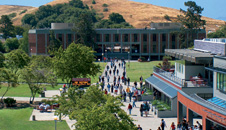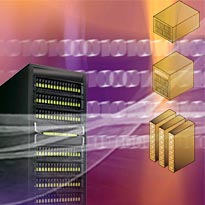Portal:Storage
From Wikibon
| (49 intermediate revisions not shown) | |||
| Line 1: | Line 1: | ||
| - | + | <meta name="description" content="The Wikibon Data Storage Portal contains data storage industry research, articles, expert opinion, case studies, and data storage company profiles." /> | |
| - | < | + | <meta name="title" content="Data Storage Technology Research: Data Storage Portal" /> |
| - | + | The Wikibon Data Storage Portal contains data storage industry research, articles, expert opinion, case studies, and data storage company profiles. | |
| - | |||
| - | |||
| - | |||
| - | + | '''Latest Information Storage Research''' | |
| - | + | * [http://wikibon.org/wiki/v/Storage_Facts%2C_Figures%2C_Best_Practices%2C_and_Estimates Storage Facts, Figures, Best Practices, and Estimates] | |
| - | + | ||
| - | |||
| - | |||
| - | |||
| - | + | {| class="wikitable" style="font-size: 80%; text-align: center; width: 95%;" | |
| + | ![[Image:LinkedIn.gif|100px|link=http://www.linkedin.com/groups?gid=835317&trk=hb_side_g]] | ||
| + | |[[Image:facebook.jpeg|100px|link=http://www.facebook.com/pages/Wikibon/6191646228]] | ||
| + | |[[Image:twitter.jpg|100px|link=http://twitter.com/wikibon]] | ||
| + | |[[Image:blog-2.jpg|100px|link=http://wikibon.org/blog]] | ||
| + | |- | ||
| + | |[http://www.linkedin.com/groups?gid=835317&trk=hb_side_g >>Join our Group] | ||
| + | |[http://www.facebook.com/pages/Wikibon/6191646228 >>Become a Fan] | ||
| + | |[http://twitter.com/wikibon >>Follow @Wikibon] | ||
| + | |[http://wikibon.org/blog >>Read the Blog] | ||
| + | |-} | ||
| - | < | + | __NOTOC__ |
| - | + | {| | |
| - | + | |+ | |
| - | {{ | + | | colspan="2" | <tipoftheday category="wikitips" /> |
| - | + | |+ | |
| - | + | | width="50%" valign="top" | | |
| - | + | ===Featured Case Study=== | |
| - | + | [[Image:Student_union.jpg|250px]] | |
| - | + | ==[[Virtualization Energizes Cal State University]]== | |
| - | + | <p style="color: #666;">John Charles is the CIO of California State University, East Bay (CSUEB) and Rich Avila is Director, Server & Network Operations. In late 2007 they were both looking down the barrel of a gun. The total amount of power being used in the data center was 67KVA. The maximum power from the current plant was 75kVA. PG&E had informed them that no more power could be delivered. They would be out of power in less than six months. A new data center was planned, but would not be available for two years. </p> | |
| - | < | + | [[Virtualization Energizes Cal State University | read more...]] |
| - | + | | valign="top" | | |
| - | + | {{Storage professional alerts 2}} | |
| - | + | |+ | |
| - | + | | valign="top" | | |
| - | + | ===Featured How-To Note=== | |
| - | + | [[Image:Storage_virtualization.jpg|left|250px]] | |
| - | + | | | |
| - | + | ==[[Storage virtualization design and deployment|Storage Virtualization Design and Deployment]]== | |
| + | <p style="color: #666;">A main impediment to storage virtualization is the lack of multiple storage vendor (heterogeneous) support within available virtualization technologies. This inhibits deployment across a data center. The only practical approach is either to implement a single vendor solution across the whole of the data center (practical only for small and some medium size data centers) or to implement virtualization in one or more of the largest storage pools within a data center. | ||
| + | </p> | ||
| + | [[Storage virtualization design and deployment | read more...]] | ||
| + | |}[[Category:Backup and restore]][[Category: Blade computing]][[Category: Business compliance]][[Category: CDP]][[Category: Careers]][[Category: Careers wikitips]][[Category: Clustered storage]][[Category: Compliance and discovery]][[Category: Enterprise mobile wikitips]] | ||
Current revision as of 00:18, 23 February 2010
The Wikibon Data Storage Portal contains data storage industry research, articles, expert opinion, case studies, and data storage company profiles.
Latest Information Storage Research
| >>Join our Group | >>Become a Fan | >>Follow @Wikibon | >>Read the Blog | ||||
WikitipHow to Create a Virtual vSphere LabThe best way to learn anything is by doing it. You want to learn more about VMware vSphere? Build a lab. It doesn't have to be complex or expensive, just capable. (We'll talk more about that in a minute.) Your new vSphere lab will help you in many ways: Improve your skills: Do things that you can't do on your production infrastructure (if you have one). Implement new features you've only read about. Break vSphere and learn how to troubleshoot it. Prepare for certification: Not only will your quest for the VMware Certified Professional (VCP) certification benefit from your hands-on experience, but the new VMware Certified Advanced Professional (VCAP) certifications will require it even more. I took the test recently, and I can safely say that you won't get by with just "reading" about vSphere troubleshooting. Proof of concept: Demonstrate what the power of vSphere advanced features, desktop virtualization or disaster recovery can do for your company. Considering enabling VMware High Availability (VMHA), Distributed Resource Scheduler (DRS), or Fault Tolerance (FT)? Test them in the lab first before enabling them in production. Once you have a lab, you'll never want to be without it again. Likely your first concern is the cost. This lab could be built using your existing hardware at no cost. Here are two options for building a vSphere lab: Option 1: Virtual vSphere Infrastructure with VMware Workstation: You can install the 60-day evaluation of VMware Workstation on a PC or laptop that you're already using. Inside that, you can install the 60-day evaluation of VMware vSphere. The virtual lab can contain two ESXi servers, a Windows vCenter server and even a virtual iSCSI SAN by installing the free OpenFiler. The primary requirement to do this is that your PC CPU allows you to enable Intel VT or AMD-V, and you need to have a fair amount of RAM (4GB or more). The primary limitations are going to be the performance that you can get out of your desktop or laptop system (without negatively impacting the performance of your daily apps), as well as the inability to run 64-bit nested virtual machines (VMs). That means that with vCenter 4 running in 64-bit Windows (now a requirement), you'll have to run it as a VM in Workstation, not as a VM under your virtual ESXi servers. It also means that you won't be able to power on any 64-bit VMs inside an ESXi server. Still, this is an excellent option for a portable virtual infrastructure lab environment costing little or nothing. Option 2: Real vSphere Infrastructure with Dedicated Hardware: If you have $1,000 to $3,000 to invest in a vSphere lab, you could build a nice lab with dedicated hardware. By still using the 60-day evaluation of vSphere, the software costs would be zero. As for the dedicated hardware, I'd recommend low-end servers (I use the Dell T610) and a small SAN such as the Iomega Ix4-200D. I bought two T610s with 8GB RAM, quad-core CPUs, very little local storage (not much is required) and the Iomega SAN, all for about $3,000. With this, I run vCenter as a VM and, using the 60-day enterprise-plus vSphere license, I'm able to use all the advanced features, such as VMotion, SVmotion, VMHA, DRS, Distributed Power Management and FT. You can easily run 10 or more VMs and get decent performance. I know a lot of pre-sales engineers and salespeople who frequently use the first option for customer demos. I use the second option daily and know many VMware admins out there who do as well. Building a virtual lab is a rewarding learning experience that will pay off, both for you and for your company, in the long term. Get started learning, testing and proving the power of virtualization.
|
Featured Case StudyVirtualization Energizes Cal State UniversityJohn Charles is the CIO of California State University, East Bay (CSUEB) and Rich Avila is Director, Server & Network Operations. In late 2007 they were both looking down the barrel of a gun. The total amount of power being used in the data center was 67KVA. The maximum power from the current plant was 75kVA. PG&E had informed them that no more power could be delivered. They would be out of power in less than six months. A new data center was planned, but would not be available for two years. |
|
Featured How-To Note |
Storage Virtualization Design and DeploymentA main impediment to storage virtualization is the lack of multiple storage vendor (heterogeneous) support within available virtualization technologies. This inhibits deployment across a data center. The only practical approach is either to implement a single vendor solution across the whole of the data center (practical only for small and some medium size data centers) or to implement virtualization in one or more of the largest storage pools within a data center. | |||



